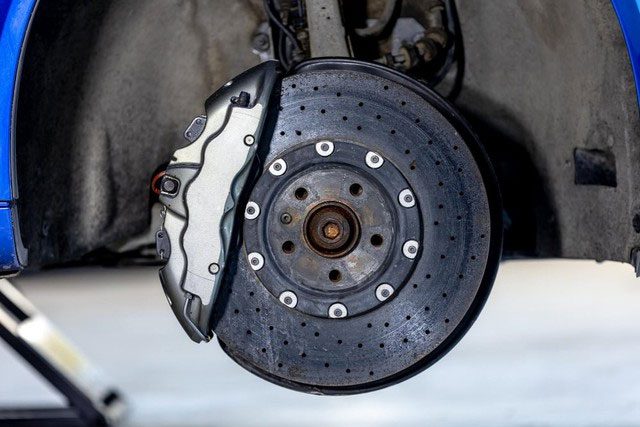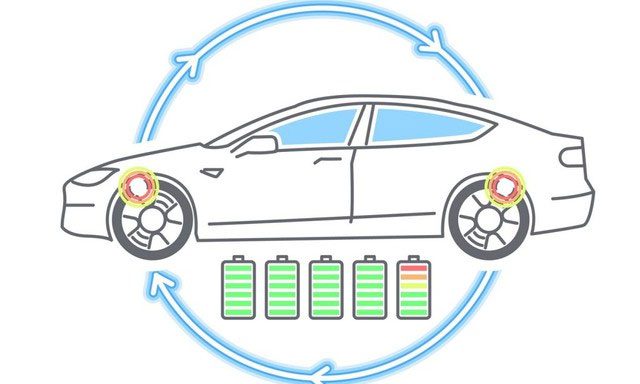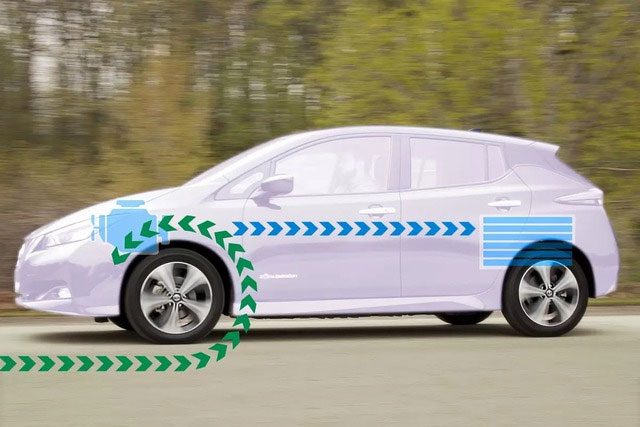When you are driving at high speed and see the traffic light turn red, your immediate action is to hit the brakes to stop the car. But have you ever wondered: What happens to the energy that your car had before stopping?
Kinetic Energy: The Energy of Motion
Any object that is in motion possesses kinetic energy. For example, a rolling ball has significantly more kinetic energy than when it is at rest. This kinetic energy does not simply vanish; it must be converted into another form when the ball stops, such as thermal energy due to friction with the ground.
In the case of automobiles, the kinetic energy of a car is much greater than that of a ball due to its larger mass and higher speed. When you drive at high speeds and brake suddenly, the enormous kinetic energy of the car must be dissipated over a short period to bring the car to a stop. This is why the braking process is crucial and needs to be carefully designed to ensure safety.
The Mechanism of Car Brakes
Car brakes are a complex system designed to convert the kinetic energy of the vehicle into another form of energy, primarily thermal energy, to reduce speed and stop the vehicle. Most modern cars use a disc brake system, where pressing the brake pedal transmits braking force from the pedal to various components in the system.
Specifically, when you press the brake, a hydraulic or electric system activates the brake calipers (brake pads) that clamp tightly onto the brake rotor (brake disc) attached to the wheels. This clamping creates friction between the brake pads and rotor, slowing the rotation of the wheels and reducing the vehicle’s speed. During this process, the car’s kinetic energy is converted into thermal energy due to friction, which dissipates into the surrounding air.

Car brakes are a complex system.
The heat generated during the braking process is substantial, especially when the vehicle is moving at high speeds or comes to a sudden stop. In Formula 1 (F1) cars, brake temperatures can reach up to 1,000 degrees Celsius during heavy braking phases. This is why braking systems must be designed to dissipate heat effectively, preventing overheating that could cause damage or reduce braking performance.
The materials used in brake pads and rotors must also withstand high temperatures and have good heat dissipation properties. F1 cars often utilize special materials such as carbon ceramics, which not only endure high temperatures but also help reduce the overall weight of the vehicle, enhancing performance.
In addition to heat, a small portion of kinetic energy is also converted into sound, which is the screeching noise you hear when braking hard. Although this sound accounts for only a tiny fraction of the energy dissipation process, it remains a notable factor, especially when the braking system is worn or not functioning properly.
The Long-Term Impact of Braking
The braking process not only dissipates kinetic energy but also affects the components of the braking system. Continuous friction between the brake pads and rotor leads to the wear of these components over time. This is why brake pads and rotors must be replaced periodically to ensure optimal braking performance and driving safety.
This wear is caused not only by heat but also by the strong forces exerted during braking. When the brake pads press against the rotor, the friction not only generates heat but also wears down the surface of both the brake pads and rotor. In some cases, small fragments from the brake pads break off and contribute to this wear process.

The braking process dissipates kinetic energy, affecting the components of the braking system.
Regenerative Braking: A New Advancement in Braking Technology
While most energy during braking is still dissipated as heat, the advent of regenerative braking technology in hybrid and electric vehicles has opened a new avenue for more efficient energy use.
Regenerative braking operates on the principle of converting kinetic energy into electrical energy. When you brake in a hybrid or electric vehicle, instead of solely using friction to dissipate kinetic energy, the regenerative braking system converts a portion of that kinetic energy into electrical energy through a generator connected to the vehicle’s electric motor. This electrical energy is then stored in the vehicle’s battery and can be reused to propel the vehicle forward, enhancing energy efficiency and reducing fuel consumption.
Although the regenerative braking system cannot recover all kinetic energy—approximately 30% of energy is still dissipated as heat—it remains an important advancement in improving the energy efficiency of vehicles, particularly in the context of urgent efforts to reduce carbon emissions and protect the environment.

The introduction of regenerative braking technology in hybrid and electric vehicles has opened a new direction.
Regenerative braking technology is gradually becoming standard in modern electric and hybrid vehicles. However, research and development in this field continue, aiming to improve energy recovery efficiency and minimize heat loss. Automakers are looking to develop new materials and design braking systems that can recover energy more effectively while maintaining or enhancing the safety and reliability of the system.
In the future, we may see the integration of advanced regenerative braking systems with other technologies, such as optimized electronic motors or intelligent energy management systems. These advancements will not only help save energy but also open up potential for vehicles that can automatically adjust the braking process to optimize performance and extend the lifespan of components.

Future technologies will help us fully recover energy when braking.
The car braking process is a prime example of energy conversion in everyday life. From the kinetic energy when the vehicle is in motion, this energy is transformed into thermal energy and a small portion into sound when you press the brakes. With the development of regenerative braking technology, we are witnessing significant progress in reusing energy, contributing to environmental protection and enhancing energy efficiency.
Although we currently cannot fully recover energy during braking, advancements in technology promise to bring new solutions in the future. Until then, understanding the mechanics of how brakes work and how energy is transformed in this process will help us appreciate the engineering and complexity of the systems we use daily.


















































